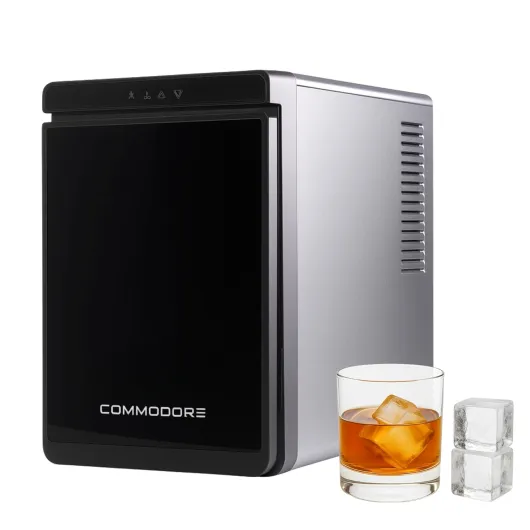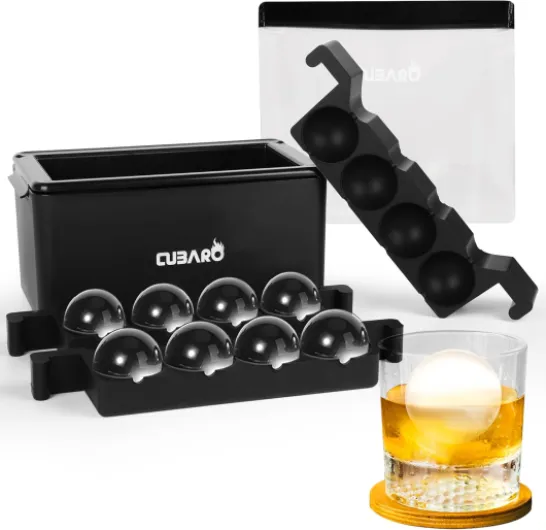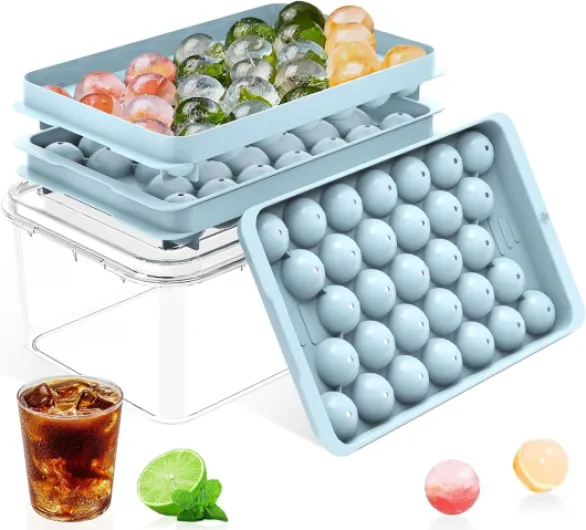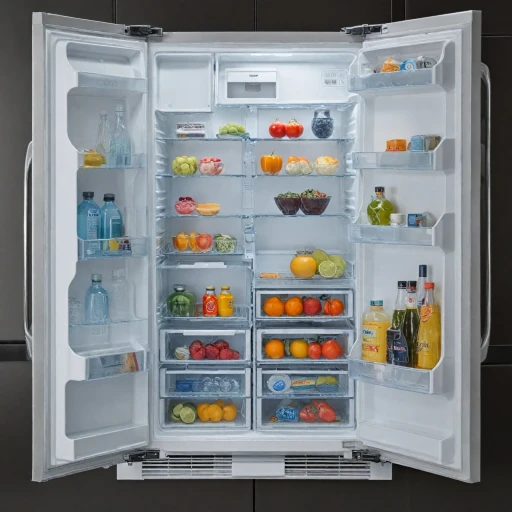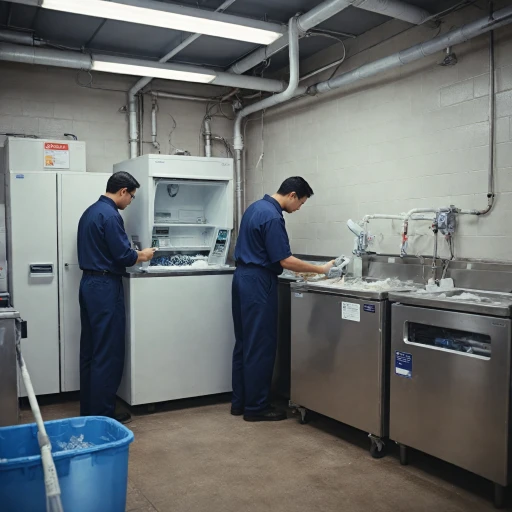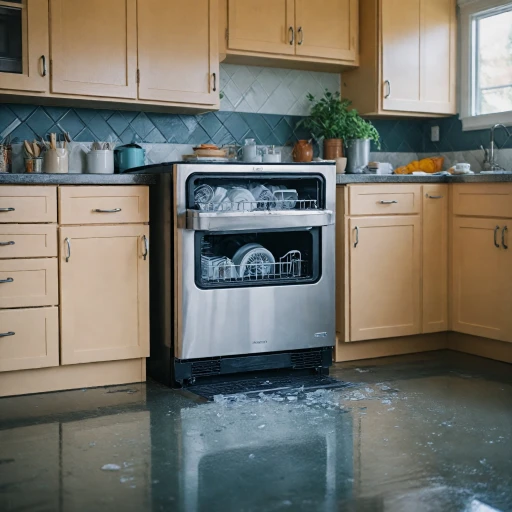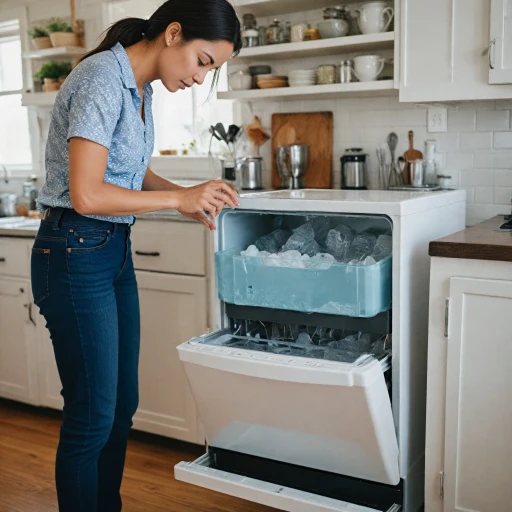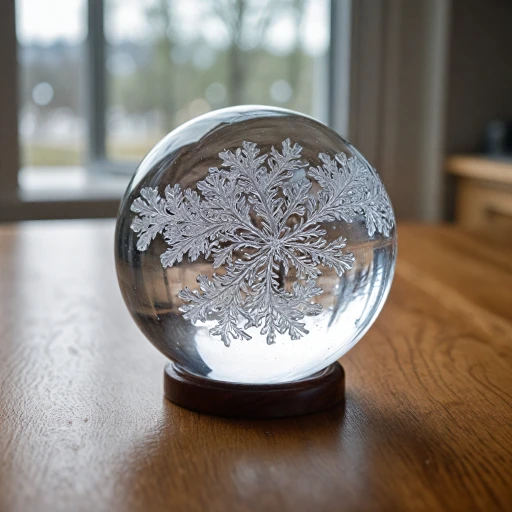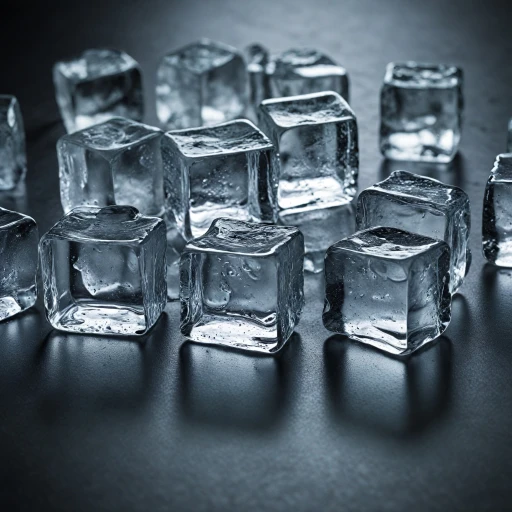
Understanding Clear Ice Cubes
Deciphering the Mystique of Transparent Cubes
When we think about ice cubes, a common picture forms in our minds — small, often cloudy blocks pulled from the freezer or ice tray. Yet, there's an appealing magic to crystal clear ice cubes. These aren't your ordinary ice cubes; they're a mark of sophistication in a cocktail or a chilled beverage. Achieving this clarity isn't a coincidence; it involves understanding and mitigating factors like air bubbles and impurities that contribute to cloudy ice.
The pursuit of clear ice begins with comprehension. Knowing the role of elements such as water quality and controlled freezing processes is crucial. The clarity of the cube can hinge on your chosen freezing method, whether using a cube tray, ice sphere maker, or deluxe ice maker. Implementing the principle of directional freezing can minimize impurities and produce the sought-after transparency.
Mastery in crafting clear ice can significantly elevate the quality of your beverages. A scripted guide, often targeted at ice maker enthusiasts, sheds light on the crucial steps. Embracing the right techniques helps in transitioning from standard, cloudy cubes to those that are perfectly crystal clear.
Diving into the journey of understanding and creating clear ice reveals much more than a mere visual upgrade. It grants a deeper appreciation for detail and delicacy, all while enhancing your beverage experience. To unlock the full potential behind crafting these pristine creations, don’t miss out on our comprehensive guide for ice maker enthusiasts.
The Science Behind Clear Ice
The Intricacies of Ice Formation
Understanding the science behind clear ice is essential for anyone looking to craft the perfect ice cube. At its core, the clarity of ice is determined by how water freezes. When water freezes slowly, impurities and air bubbles have time to escape, resulting in crystal clear ice cubes. In contrast, rapid freezing traps these impurities, leading to cloudy ice.
Directional Freezing: The Key to Clarity
One of the most effective methods to achieve clear ice is through directional freezing. This technique involves controlling the direction in which water freezes, typically from top to bottom. By doing so, air bubbles and impurities are pushed to the bottom of the ice block, leaving the top clear. This method is often used in ice makers designed for crafting clear ice cubes.
Factors Affecting Ice Clarity
- Water Quality: Using filtered or distilled water can significantly improve the clarity of your ice cubes. Tap water often contains minerals and impurities that contribute to cloudiness.
- Freezing Speed: Slower freezing allows air bubbles to escape, resulting in clearer ice. Consider using a cooler or insulated box to slow down the freezing process.
- Air Exposure: Minimizing air exposure during the freezing process can help reduce the formation of cloudy ice. Using a lid or covering the ice tray can be beneficial.
For those interested in diving deeper into the techniques and science of making clear ice, this guide provides a comprehensive overview.
Choosing the Right Ice Maker
Finding the Ideal Machine for Perfect Clarity
Choosing the right ice maker is crucial for achieving crystal clear ice cubes. While many ice makers promise clarity, not all deliver results. Here's what to consider:
- Ice Production Type: Whether you're into making large clear ice blocks or small ice spheres, selecting a product that suits your needs is key. Determine if you need an ice cube tray or if a complete ice maker suits better.
- Directional Freezing Capability: To avoid cloudy ice, opt for products with directional freezing features. This technique freezes water from the top down, eliminating air bubbles.
- Quality Ratings: Look for ice makers with high rated stars from verified buyers. It’s important to read reviews from those who’ve actually used the ice maker you’re considering.
- Water Quality: Some machines work best with purified water rather than just tap water. Ensure the ice box or machine’s manual specifies the type of water required.
- Size and Design: Depending on your space, ensure the maker fits your kitchen or bar. Smaller designs might be suitable for occasional use, while larger units suit frequent cocktail hosts.
Additionally, be prepared for potential issues such as clogged ice makers. For more guidance, you can troubleshoot a jammed ice maker efficiently.
Step-by-Step Guide to Making Clear Ice
Creating Crystal Clear Ice Cubes: A Simple Process
For those aiming to achieve perfectly clear ice cubes, employing the right process is just as important as selecting a quality ice maker. Here’s a step-by-step guide to help you on your journey to crystal clarity.Prepare Your Water
The foundation of clear ice is the water you choose. Although many opt for tap water, if you're seeking crystal clear results, consider using purified or distilled water. This minimizes the minerals and impurities that can lead to cloudy ice. For those serious about their ice-making endeavors, using boiled and cooled water can make all the difference.Select the Right Tools
Your choice in equipment is essential. A top-rated ice maker designed for clear ice will certainly elevate the quality of your end product. Look for a mold or cube tray designed specifically for directional freezing, which helps air bubbles move away from the ice cubes as they freeze, resulting in clearer cubes.Control Freezing Conditions
Temperature management is crucial. Although it seems intuitive to drop your tray in the freezer and wait, a more controlled freezing process is often required. Rather than using the freezer’s coldest setting, aim for a steady, moderate temperature. Freezing your ice slower in a cooler environment allows impurities and air bubbles to escape, leading to clearer cubes.Directional Freezing Technique
Many clear ice enthusiasts recommend a technique called directional freezing. By using an ice box that insulates on all sides except the top, you can encourage ice to freeze from the top down. This way, the air is pushed to the bottom and ensures the top of the ice cube is crystal clear.Time Factor to Consider
Patience is key. A rushed process often leads to cloudy ice, as the quick freeze traps air and impurities. Depending on the cooler’s temperature, aim for a slow freeze over 18-24 hours to achieve the clearest possible results.Removing and Storing Your Ice
Once your cubes are adequately frozen, carefully remove them from the tray or mold. To prevent them from sticking together in storage, keep them in an airtight container. This prevents unwanted exposure to air and odors, which could compromise your cubes’ clarity. Following these steps will make the process of creating large clear ice cubes a straightforward task and enhance your beverage experience with visually appealing cubes every time.Common Challenges and Solutions
Recognizing Common Challenges in Crafting Clear Ice
Creating clear ice cubes can often lead to a few hurdles along the way. Here are some common challenges you might encounter, along with effective solutions to help you achieve that crystal-clear perfection.Cloudy Ice Concerns
When your ice cubes appear cloudy rather than clear, it is usually due to trapped air bubbles. To tackle this:- Opt for the directional freezing method which helps push air to the bottom of the tray, leaving the top part clear.
- Use larger molds or trays to facilitate slower freezing which often results in clearer ice.
- Always start with boiling or distilled water as this reduces impurities.
Ice Sticking to the Tray
Removing ice cubes without damaging them can be tricky. To prevent sticking:- Gently warm the bottom of your tray by placing it upside down on a cooler or room temperature surface for a short time.
- Use silicone molds that make it easier to release the ice without cracking.
Cracks in Ice Cubes
Cracks in ice can not only affect clarity but also the aesthetics:- Avoid using the freezer's top shelf, as warmer air rises and leads to rapid freezing.
- Ensure freezing is slow and steady; a small cooler situated in the freezer can help control this process.
Inconsistent Cube Size
When ice cubes vary in size, they tend to freeze at uneven speeds, causing partial cloudiness:- Always fill each mold or tray compartment to the same level with water.
- Verify that your ice maker is level to ensure uniform freezing.
Enhancing Your Beverage Experience
Elevating Your Drink Game with Stunning Ice
Once you've mastered making clear ice, you'll appreciate just how much it can elevate your beverage experience. Clear ice cubes not only add an aesthetic appeal but also offer functional benefits that enhance your cocktails, spirits, and other chilled drinks.
With clear ice, you can say goodbye to the dreaded cloudy ice and hello to crystal clear ice chunks that won't just melt away. As you've learned about the science of freezing water, directional freezing plays a pivotal role in achieving this clarity, minimizing air bubbles and impurities.
Here are some tips to make the most of your new ice-making prowess:
- Size Matters: Experiment with different ice shapes such as spheres or large clear cube trays. A good ice sphere or cube can significantly impact how your drink stays chilled, adding elegance and sophistication to any glass.
- Serving Suggestions: When serving cocktails, large ice cubes or spheres are recommended as they melt slowly, keeping your drink cooler without diluting it too quickly.
- Perfect Pairing: Pair the perfect ice with top-quality spirits. Since water quality affects the clarity of your ice cubes, using filtered or distilled water will offer the best results and enhance the flavor profile of your drink.
- Avoid Overcrowding: Ensure that your ice stays in optimal condition by avoiding overcrowding in the freezer. Use a dedicated section or an ice box to prevent odors from affecting the taste.
- Impressive Mold Options: Invest in silicone or quality ice molds for clear ice cubes that let you show off your ice-making skills. These molds can elevate the visual appeal of your presentations, impressing any guest.
Whether you’re a novice or an enthusiast, having the right ice maker and using the tips provided will give you ice cubes that serve as much more than a cooling agent—they’ll spice up your drinks, making each sip pure bliss.
-logo-retina.png)
